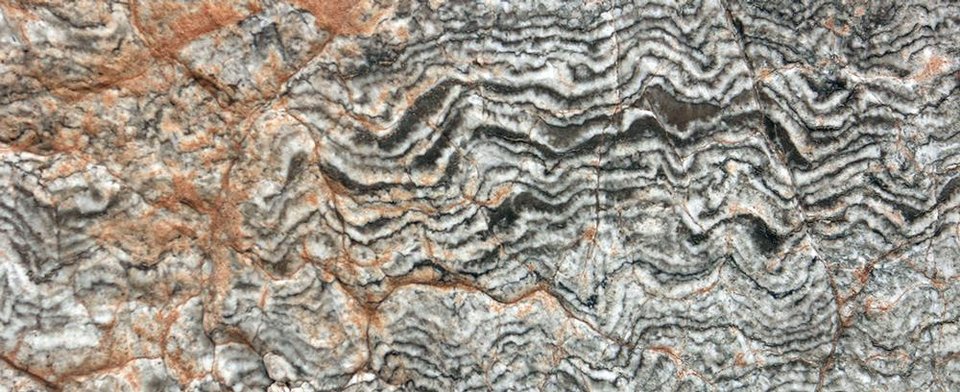
Contorted gypsum-limestone laminations

This photograph is from Stop 7 of "A Geologic Guide to the Quebradas Back Country Byway", by Peter A. Scholle
Image taken:
11/12/2004
by: Peter Scholle
©
2004
About this image
From A Geologic Guide to the Quebradas Back Country Byway by Peter A. Scholle (free copy or download ):
A short and easy walk upstream along the east-west oriented section of Arroyo de las Cañas will bring you to superb exposures of the Cañas Gypsum Member of the Yeso Formation. After crossing a yellow sandstone bed that marks the top of the Torres, the next several hundred yards of exposure on the south side of the valley consist of massive gypsum (the hydrated form of calcium sulfate, CaSO4 · 6H2O). In most climates, gypsum is removed through dissolution by near-surface ground water. In the warm, dry climate of New Mexico, however, gypsum can reach the surface and survive there for some time. This is an exceptional outcrop, and it is one of only a handful of places in the U.S. that such fresh gypsum outcrops can be seen.
The Cañas Gypsum Member in this area can be as much as 190 feet thick, although at this site only 30–40 feet of gypsum is exposed. The gypsum displays a number of distinctive fabrics, especially laminations of alternating dark and light layers, an eighth to a quarter of an inch thick. The dark layers consist of limestone and organic matter. The light layers contain mainly gypsum. Such repeated cycles are interpreted as representing varves —annual cycles with dry-season evaporation producing gypsum and cooler, wetter seasons yielding organic limestone layers. The laminated deposits are indicative of a large and relatively deep-water saline coastal lake (salina) or restricted marine embayment that extended 110 miles from just north of Mountainair to south of Alamogordo and Truth or Consequences.
[See more information related to this image...]
Image posted: 12-17-2021


